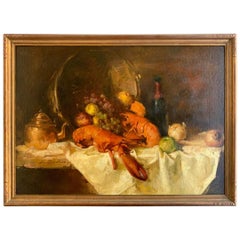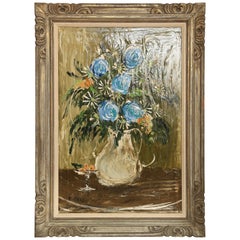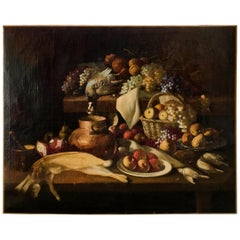William Frederick Foster Decorative Art
William Frederick Foster was an American artist, painter and sculptor, born in Cincinnati, Ohio, in 1883. He became a noted figure painter and illustrator, living the last 21 years of his career in Los Angeles, California. At the age of 12 years, he moved with his family to Colorado, but in 1898, he returned to Cincinnati and enrolled at the Art Academy, where he studied with Joseph Henry Sharp and Frank Duveneck. Foster's early ambition was to be a violinist, but he was re-focused on fine art, when he saw a painting by Albert Beck Wenzell. In 1902, he went to New York City, where he painted scenery for theaters, auditoriums and large department stores. He also studied at the New York School, with Robert Henri and William Merritt Chase.
From 1903–31, Foster worked as an illustrator and had a brief teaching stint, in 1919, at the Art Institute of Chicago. In 1903, he sold his first illustration, a depiction of high society, to Life magazine, with the style very similar to Wenzell. From that time onwards, he worked for most of the major magazines, including Collier's, The Saturday Evening Post and Harper's Monthly. In 1926, he won the National Academy of Design's Thomas B. Clarke Prize, for the best figure composition painted in the United States by a non-academician. The following year, Foster was voted an Associate Member, based on his recognition for a figure work titled, The Girl in Brown.
During World War I, Foster operated his own ambulance in France, as a member of the American Volunteer Motor Ambulance Corps and also received mention as a camoufleur artist. Returning to the U.S., he resumed his illustration work and moved to Chicago, where he taught at the Art Institute. He moved to Los Angeles, in 1932 and devoted his energy to painting, exhibiting and teaching. He taught at the Chouinard School of Art, in Los Angeles and gave private classes in his studio. Foster also worked on a mural project at the Hearst estate, in Wyntoon, California and was an active member of the California Art Club.
Early 20th Century American American Classical William Frederick Foster Decorative Art
Masonite
20th Century American Mid-Century Modern William Frederick Foster Decorative Art
Paint
17th Century Dutch Baroque Antique William Frederick Foster Decorative Art
Canvas, Paint
Late 19th Century Dutch Baroque Antique William Frederick Foster Decorative Art
Copper
20th Century American American Classical William Frederick Foster Decorative Art
Paint
Late 19th Century French Antique William Frederick Foster Decorative Art
Canvas, Giltwood
Late 19th Century Unknown Antique William Frederick Foster Decorative Art
Canvas, Wood, Paint
20th Century North American William Frederick Foster Decorative Art
Canvas, Paint
Mid-20th Century American Mid-Century Modern William Frederick Foster Decorative Art
Fabric, Canvas, Paint
Late 19th Century French Antique William Frederick Foster Decorative Art
Canvas, Giltwood
1960s American Vintage William Frederick Foster Decorative Art
20th Century Belgian Baroque Revival William Frederick Foster Decorative Art
Canvas
Late 18th Century Italian Rococo Antique William Frederick Foster Decorative Art
Canvas, Paint


